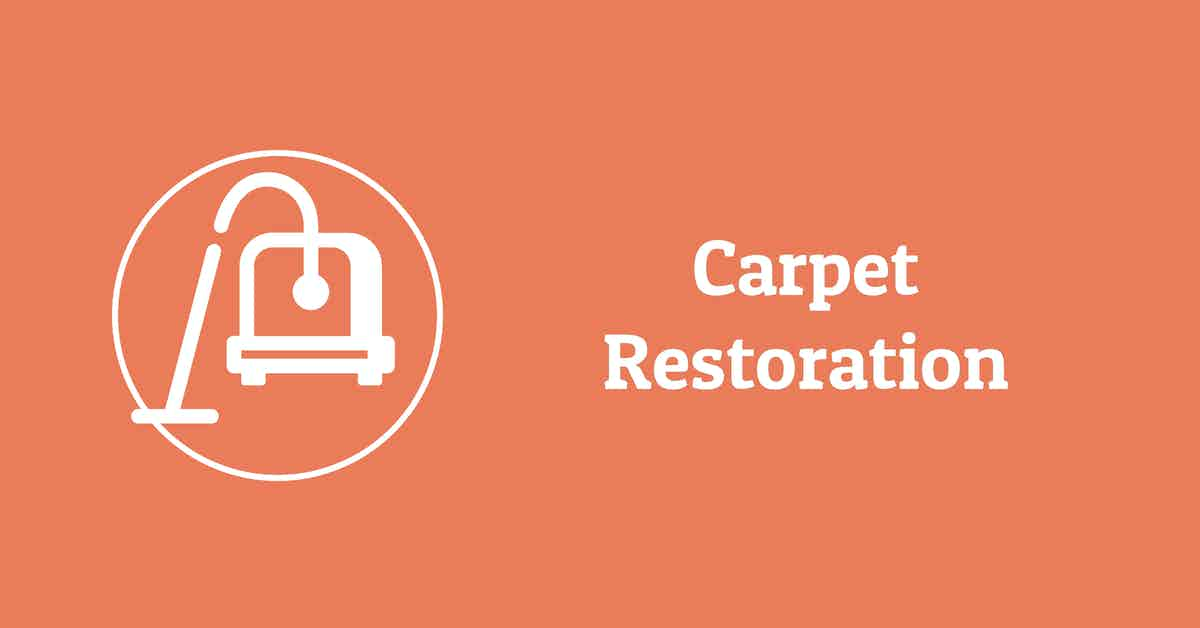Restoring water damaged carpets is an extremely laborious--potentially dangerous--task requiring advanced training, equipment, protection, and experience.

Assessing and Restoring Water Damaged Carpets
The Atlantic hurricane season is upon us, and with that comes heavy rainfall and flooding, which can wreak havoc on schools and businesses already overburdened with lockdowns and increased cleaning requirements.
With the floodwaters come dangerous chemicals and infectious disease, such as;
- E. coli.
- Salmonella.
- Shigella.
- Hepatitis A.
- Tetanus.
- Agricultural or industrial chemicals, and;
- Mold spores.
Additionally, the standing water will attract mosquitos. This increases the risk of spreading encephalitis and the West Nile Virus.
Further, according to the U.S. Centers for Disease Control and Prevention (CDC), the HVAC system will most assuredly develop mold contamination and should be shut off and then serviced prior to any additional cleaning, including the damaged flooring.
Cleaning and remediating an HVAC system takes special care.
The CDC states that mold will grow on all HVAC system components, even in areas that were not inundated.
They suggest removing and discarding contaminated insulation and filters before cleaning with a HEPA-filtered vacuum and disinfecting with a bleach solution.
Follow the disinfection procedure with a clean water rinse and dry thoroughly.
How to Clean Up After A Flood
The volume and source of water damage to your facility will dictate the response.
A relatively smaller spill will likely only call for a few mops and buckets, a wet-dry vac, and some fans to help the floor dry.
A larger spill emanating from a busted pipe or large storm, especially where the water has been standing for some time, will require significantly more effort.
The first step is to ensure the structural integrity of the building prior to allowing employees or workers access.
Additionally, if the source of the flooding was from a busted pipe, turn off all the water, then shut off all the power at the circuit breaker to avoid electrical hazards.
Once that is done, you'll need to ventilate the space.
It's best to start ventilating as early as possible, so if the power is off, open as many doors and windows as possible until power can be restored, then use commercial-grade exhaust fans.
The type of water--clean, greywater, or blackwater--will typically determine the type of equipment used throughout the ventilation process.
Use pumps, mops, and whatever tools necessary to begin removing any standing water.
Make certain everyone is wearing protective equipment appropriate for the environment.
Remove any debris.
Remove and dispose of all furniture and floor coverings--these are likely unsalvageable.
Additional equipment, such as heaters and dehumidifiers will likely be necessary to remove humidity from the air, and HEPA filters may be necessary to remove toxins and VOC's from the air while the carpet is being cleaned, but only onsite testing will be able to establish what is needed, and when.
In some cases, the carpet may need to be lifted, the padding removed, the underflooring cleaned, and the entire space dried with fans and heaters.
In severe cases, the carpet will need to be completely disposed of.
References & Resources
- Assessing Damage For Proper Carpet Restoration
- Recommendations for the Cleaning and Remediation of Flood-Contaminated HVAC Systems: A Guide for Building Owners and Managers
- Water Damage Determines Carpet Drying Strategy
- Onsite Testing Determines Restoration Equipment
- The Morning After: Flood Cleanup
Takeaway
Facility cleanup post-flooding can be incredibly dangerous and should only be undertaken by trained professionals.
Failure to retain the services of an experienced custodial worker can result in further property damage, illness, and death.
In the event of extreme black water flooding, additional facility-wide cleaning and disinfection services will be required, mandating the necessity of advanced cleaning systems and processes not typically available to most businesses.
For these reasons, we highly recommend outsourcing your facilities' post-flood carpet restoration and other cleanup services to an experienced service provider dedicated to the highest standards of cleanliness and safety.
Contact us today and discover why Vanguard Cleaning Systems® is the Standard of Clean® for businesses throughout Northwest Arkansas, Missouri, and Oklahoma.
In Oklahoma, dial 918-960-4450
In Arkansas, dial 479-717-2410
In Missouri, dial 417-812-9777
